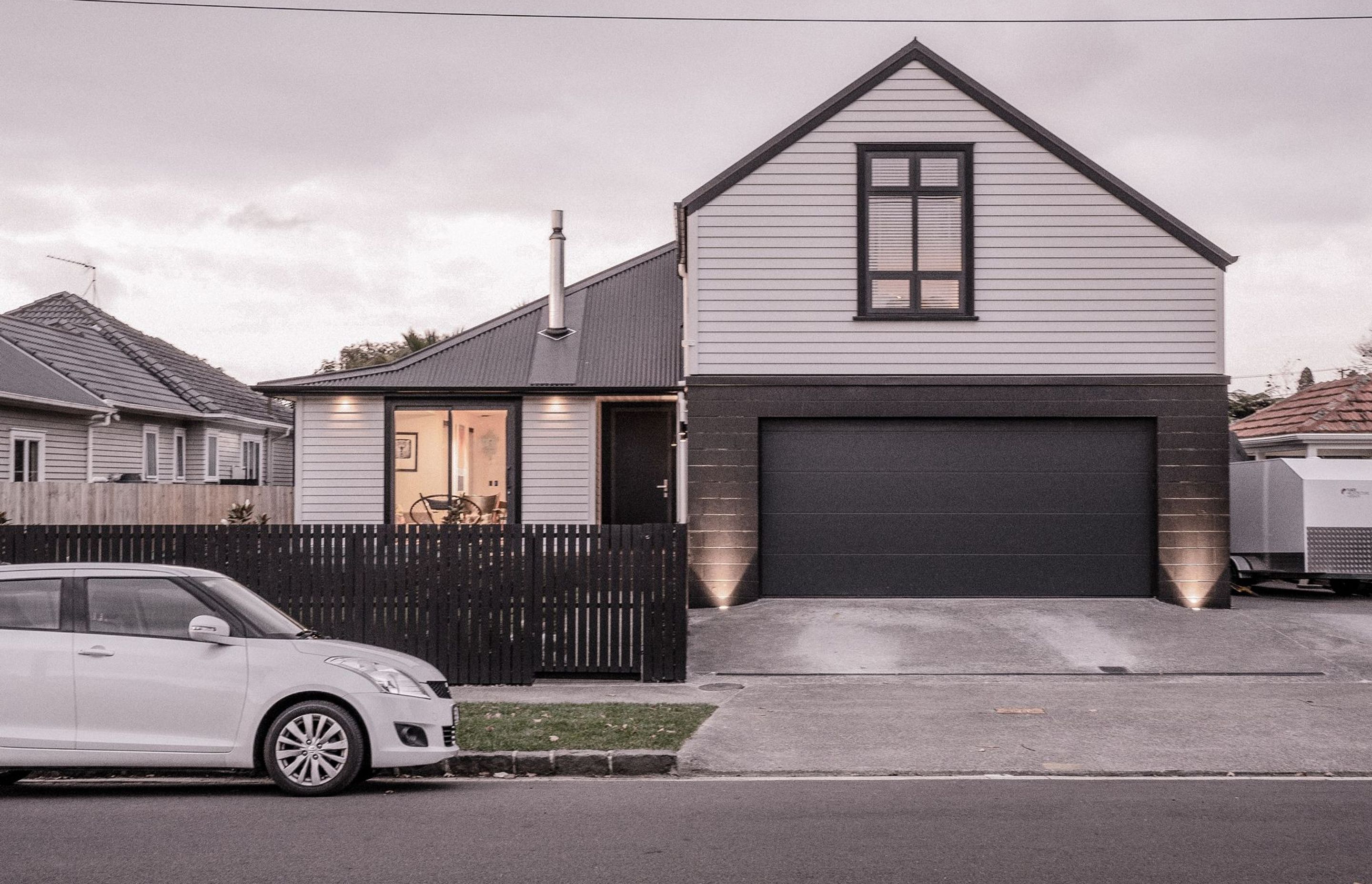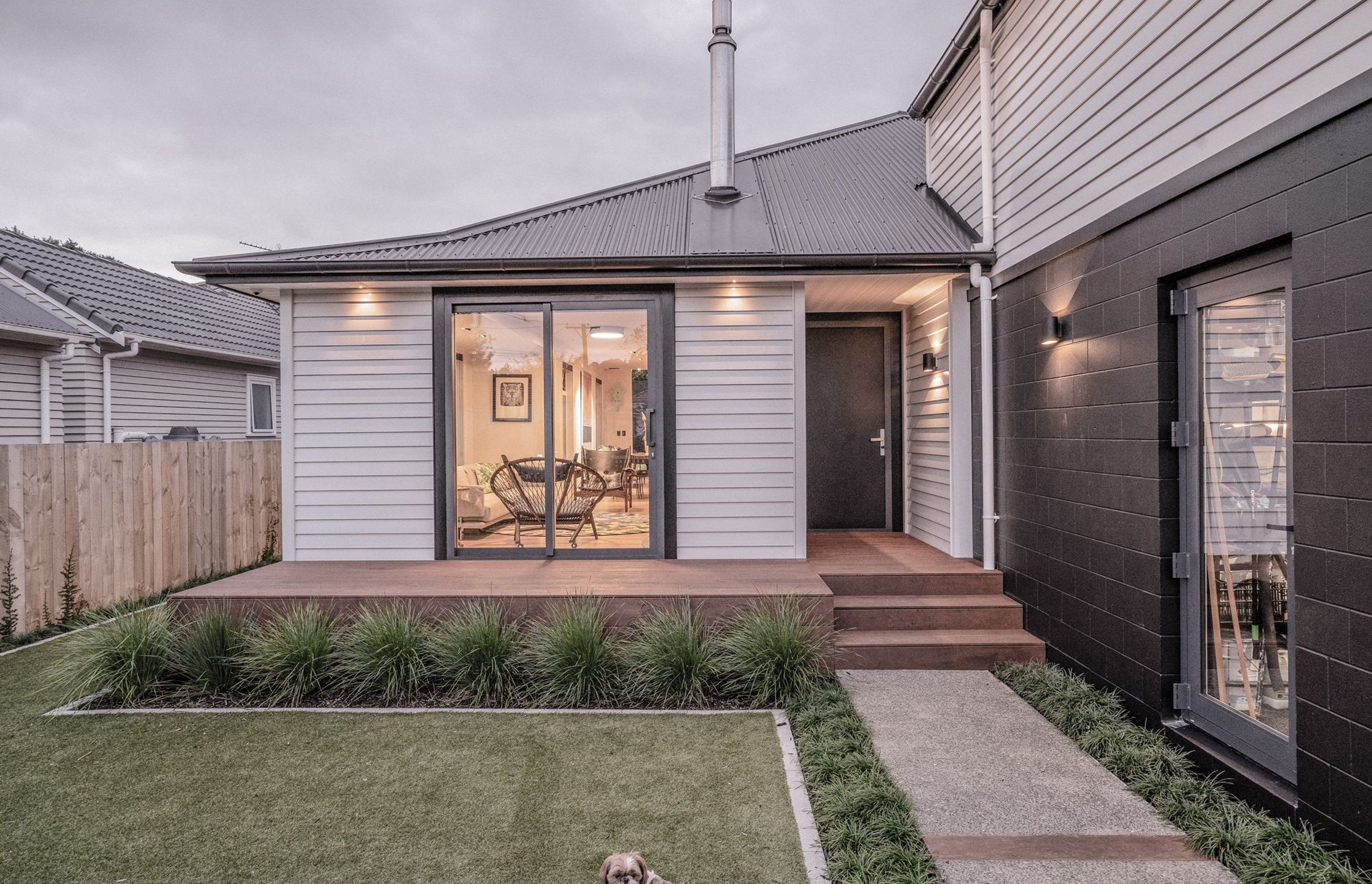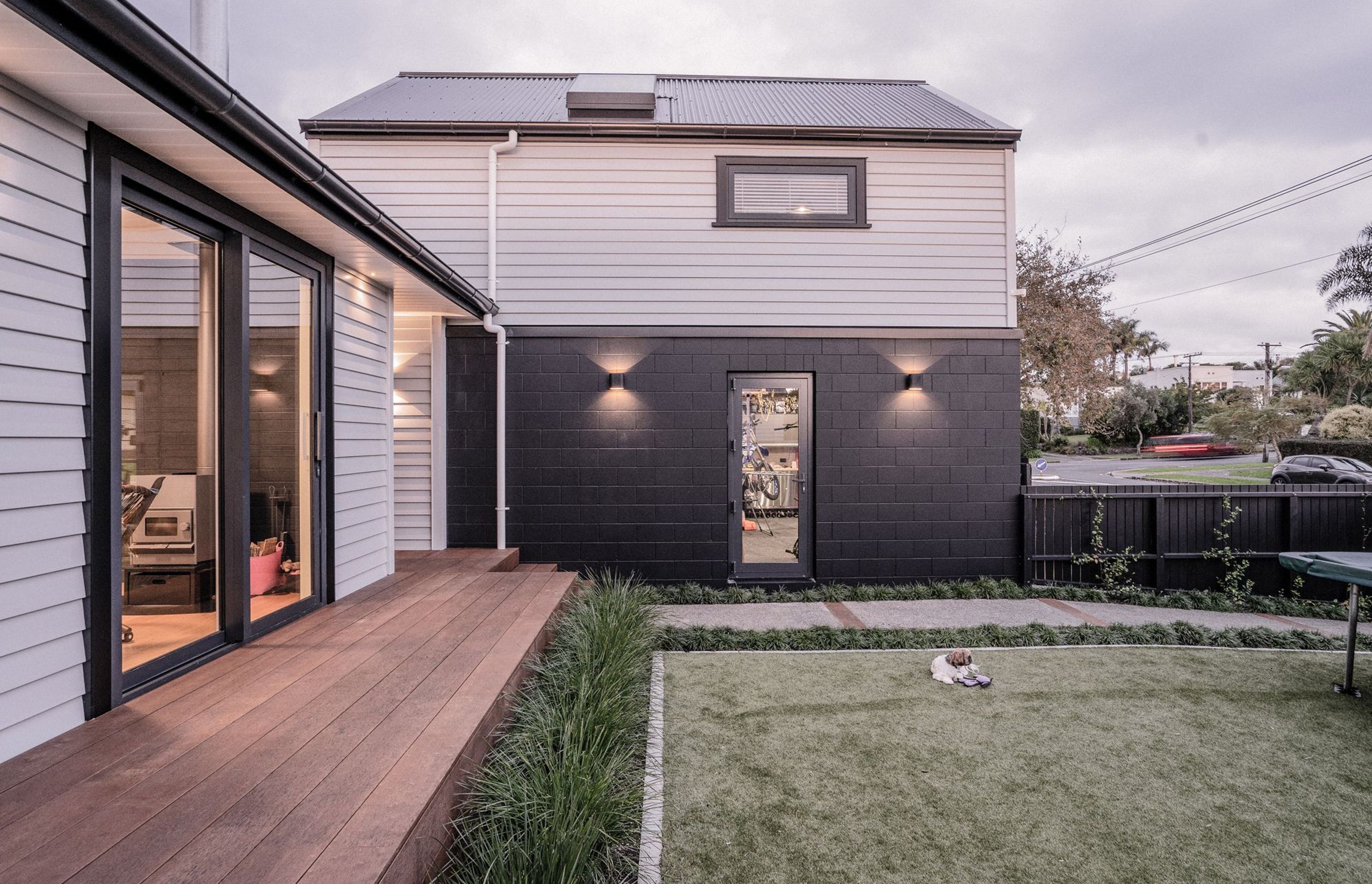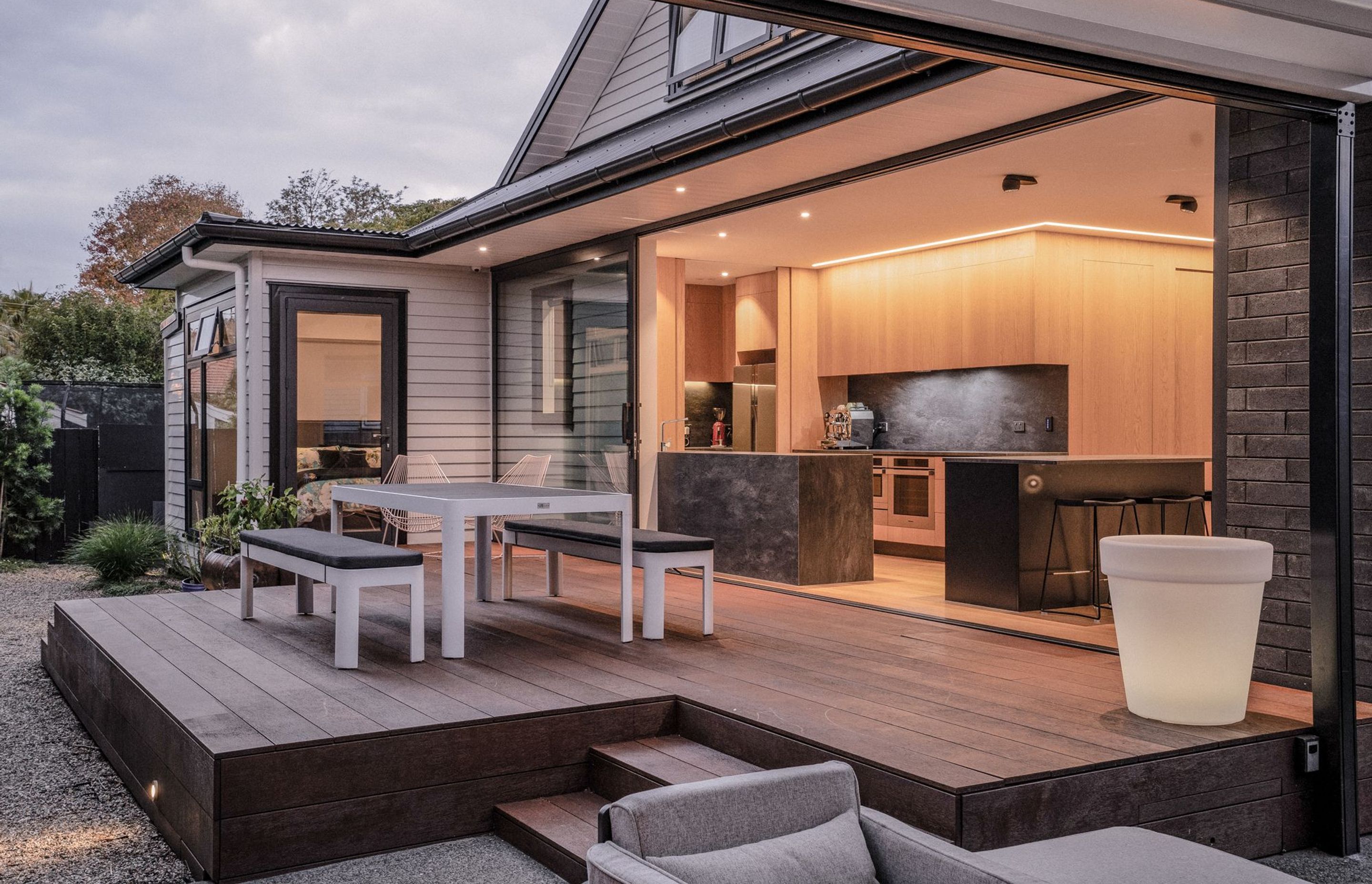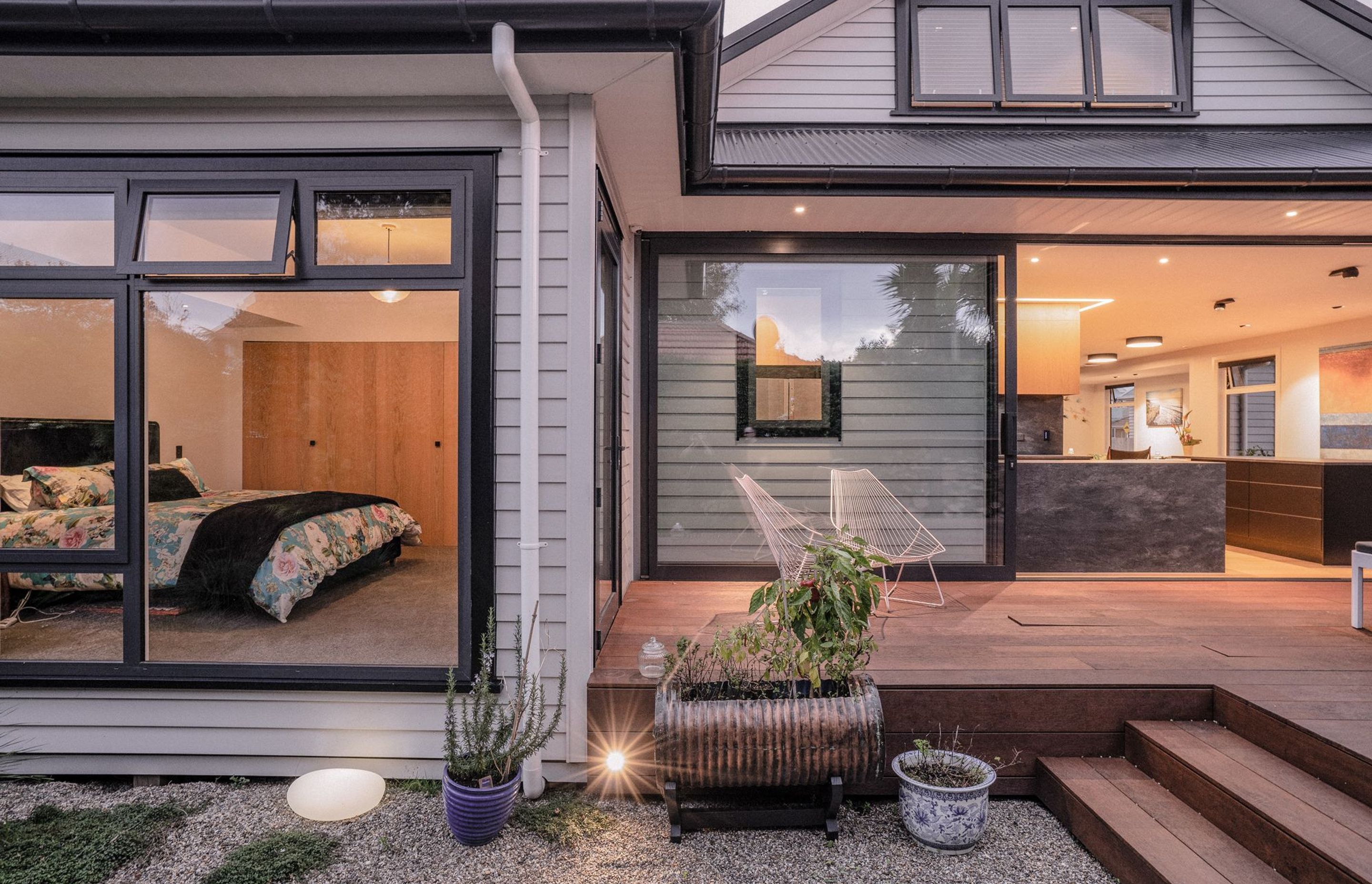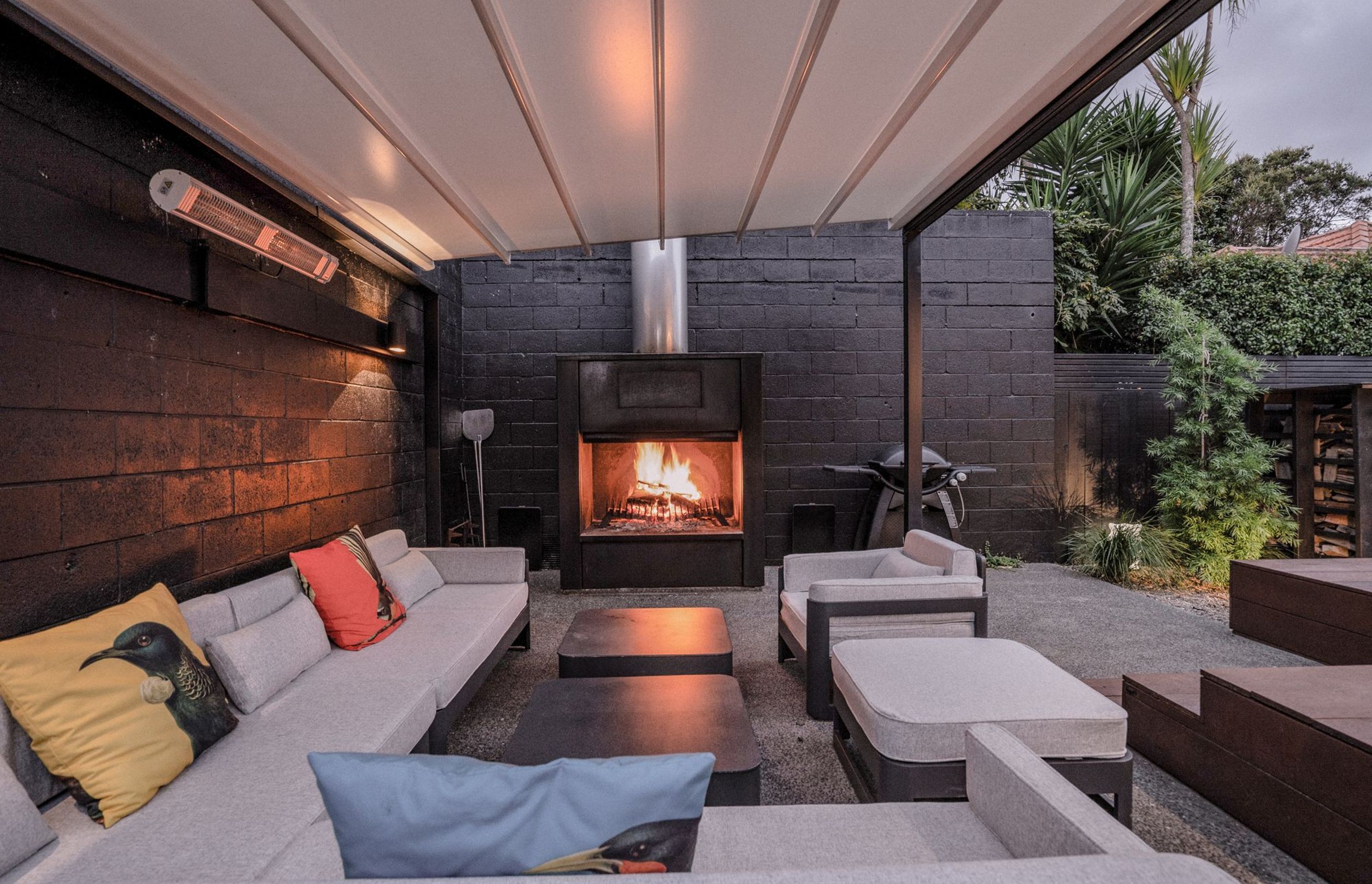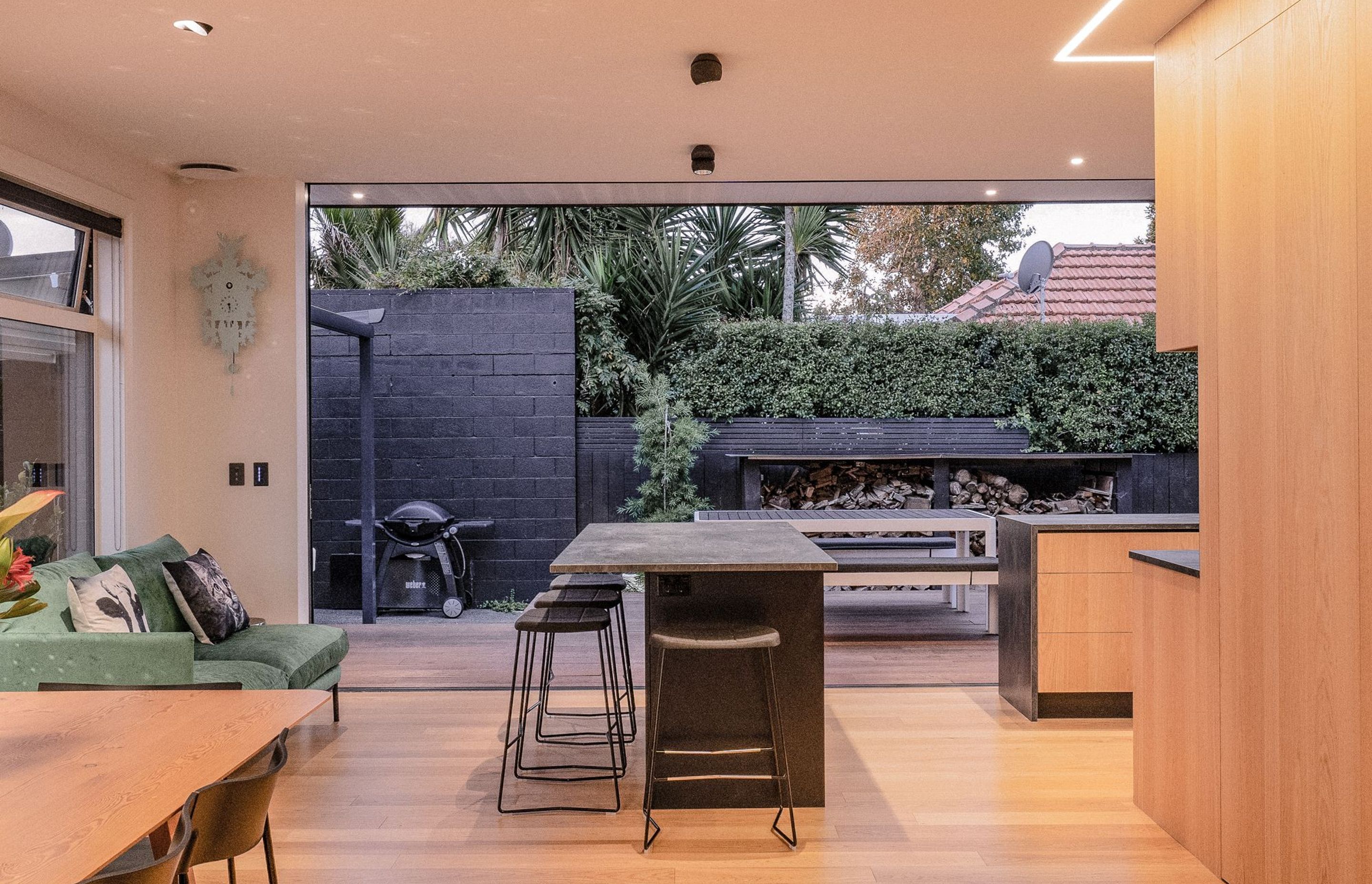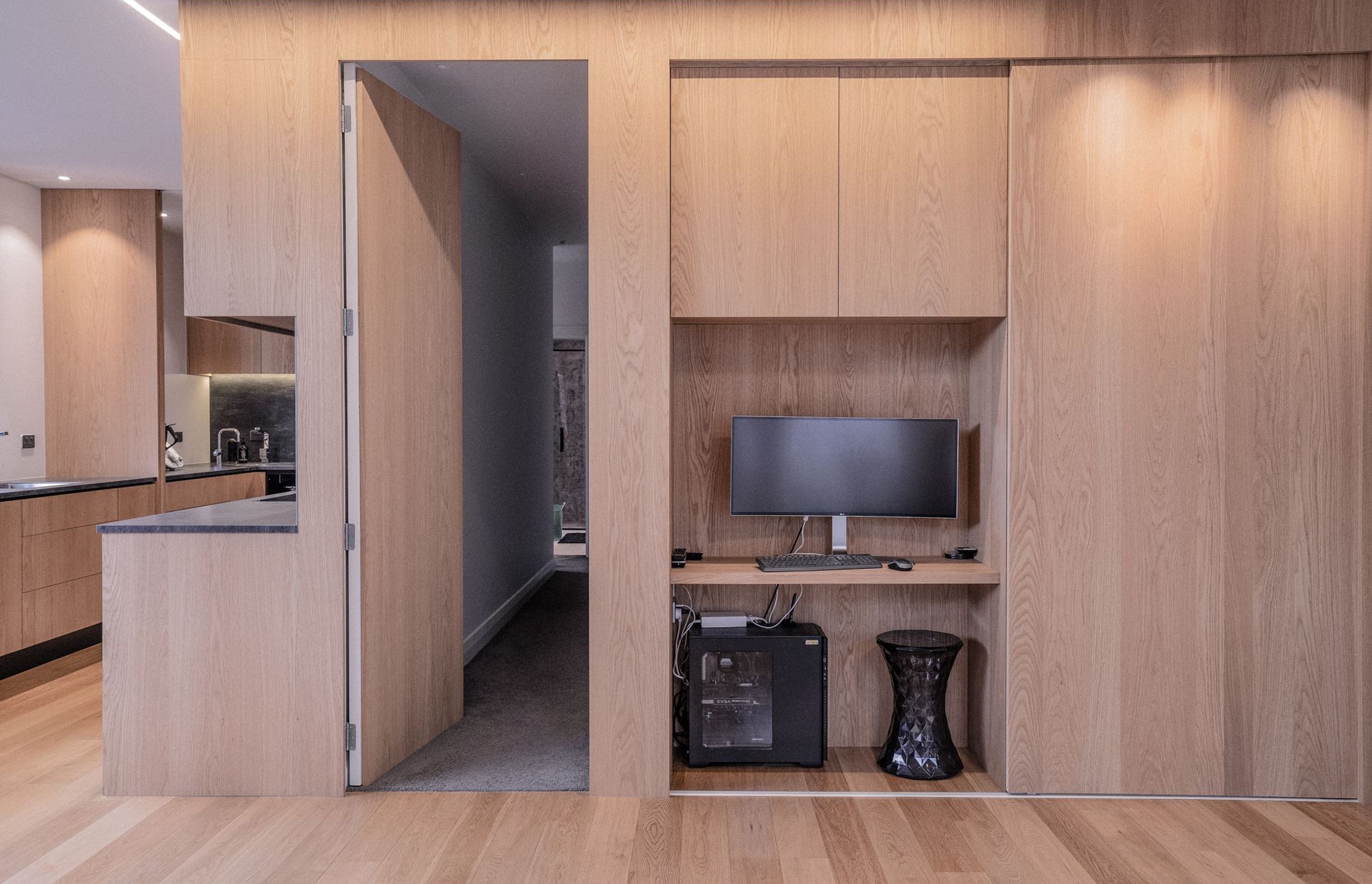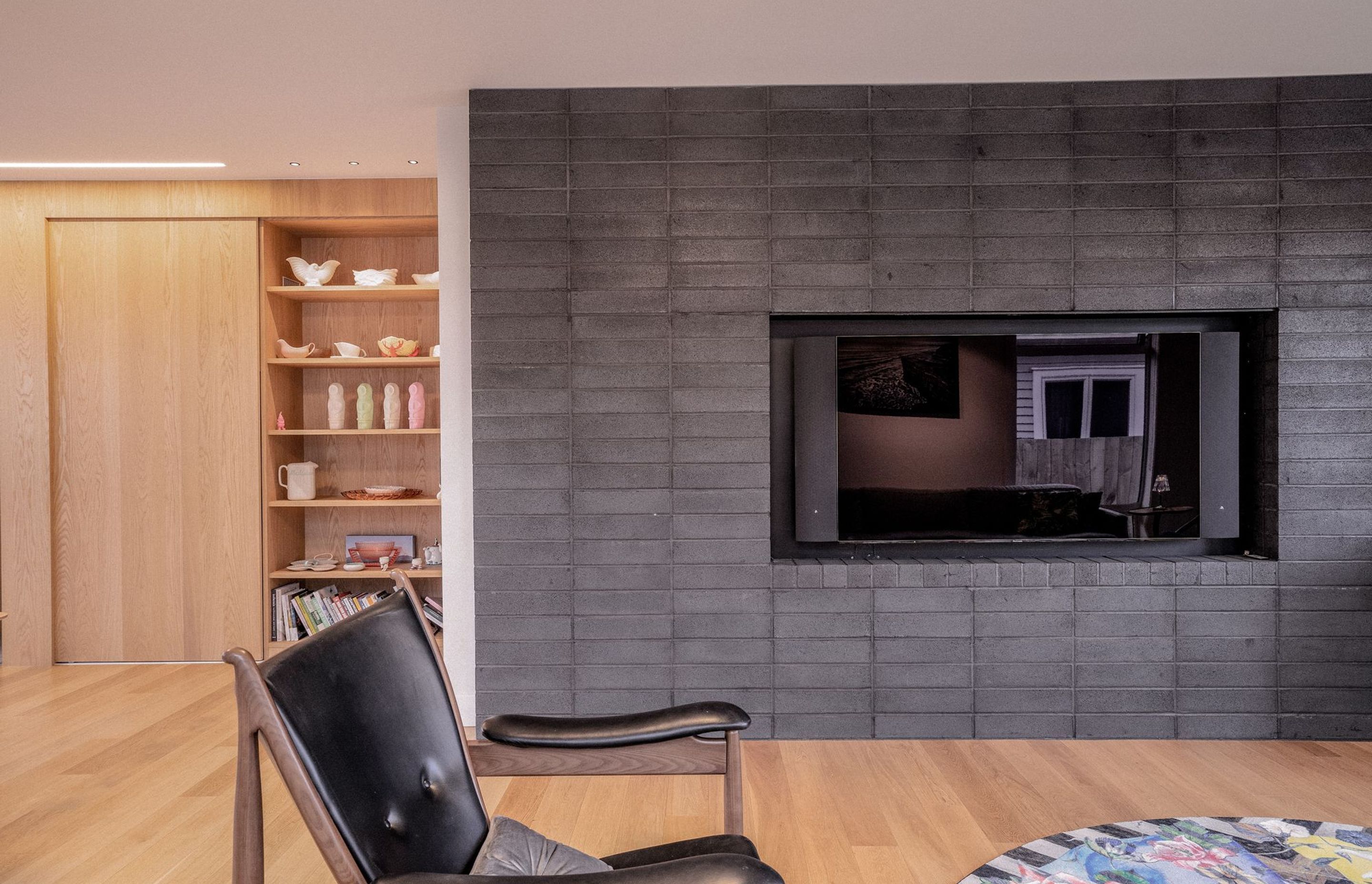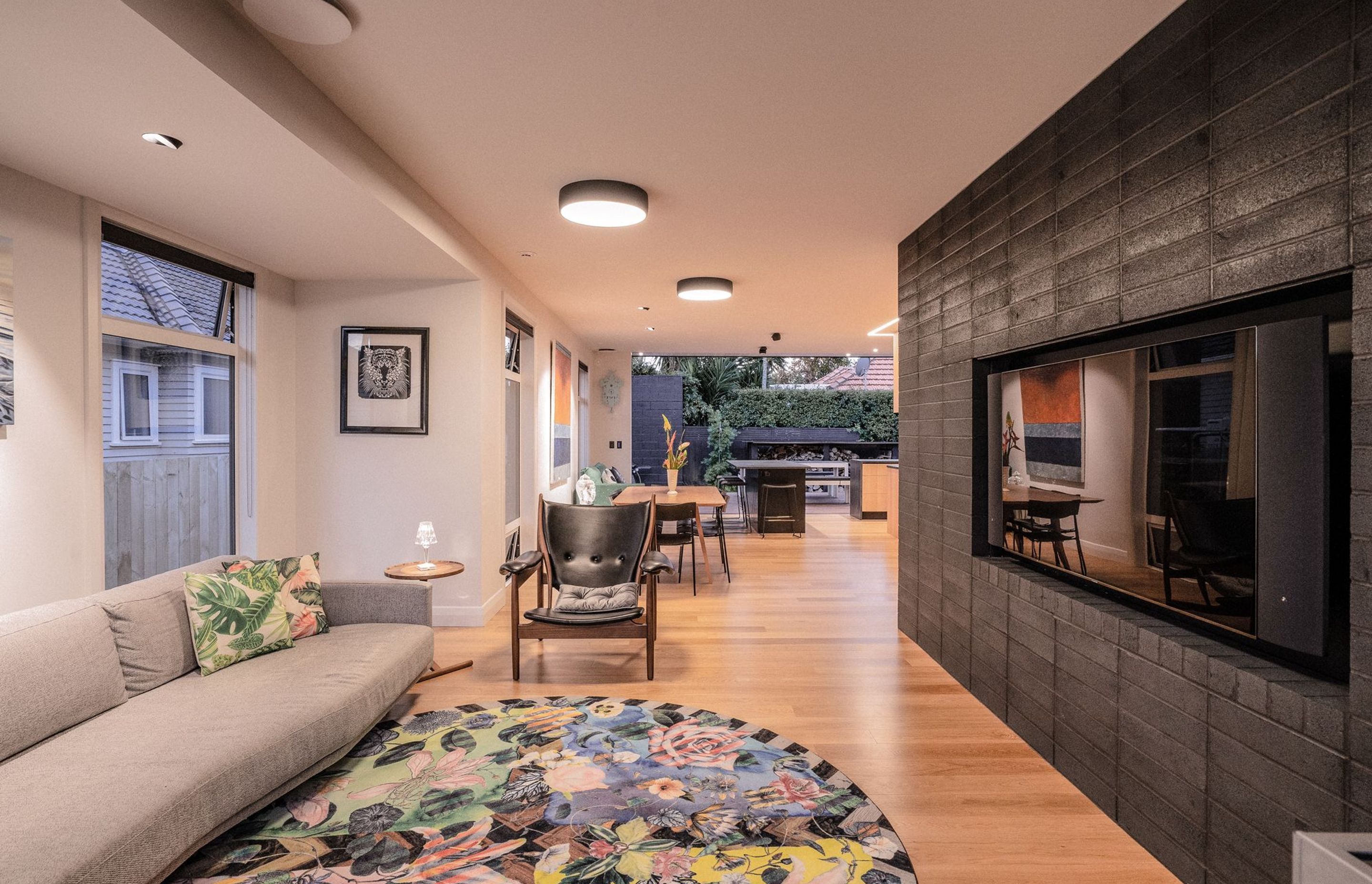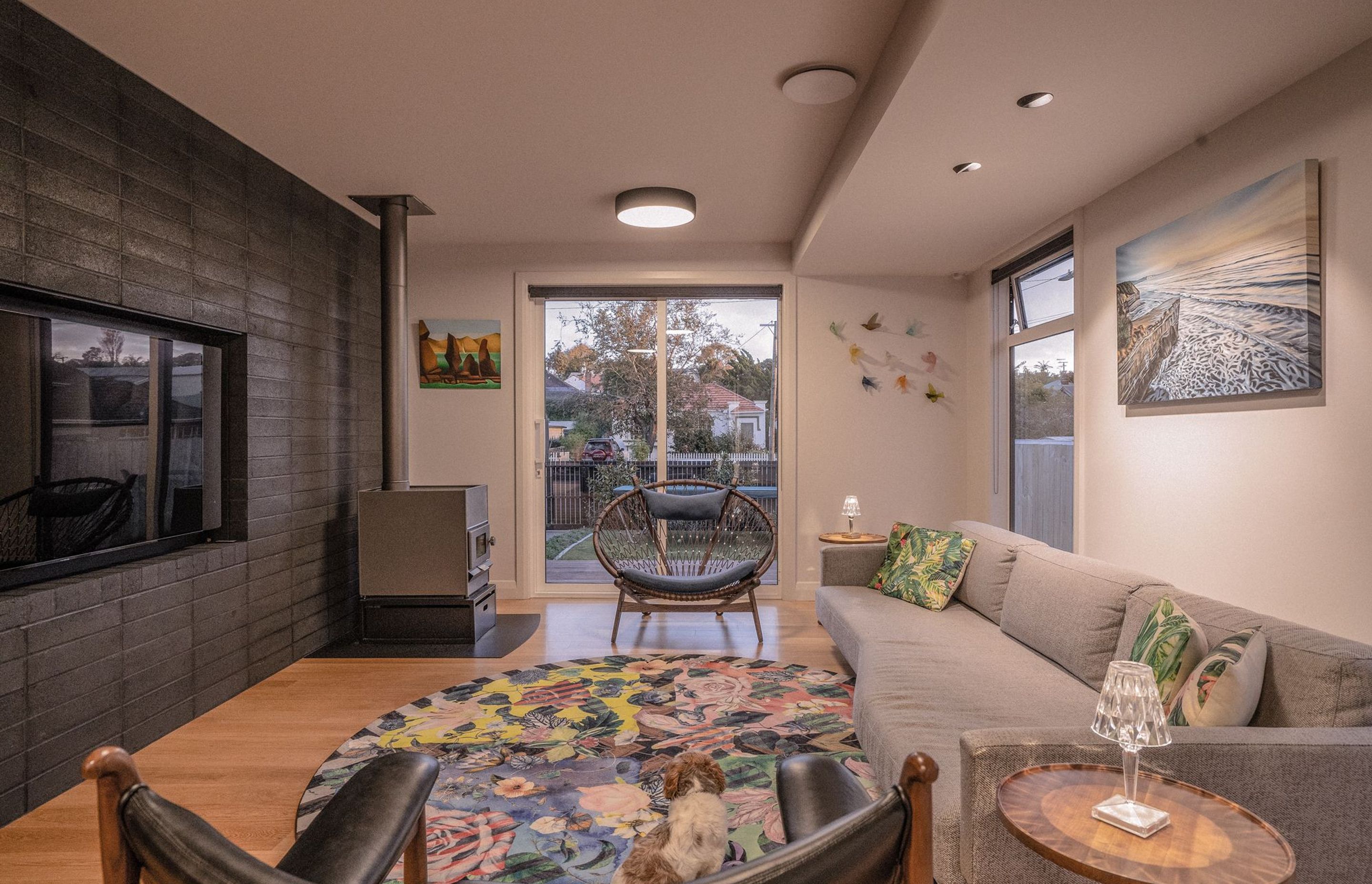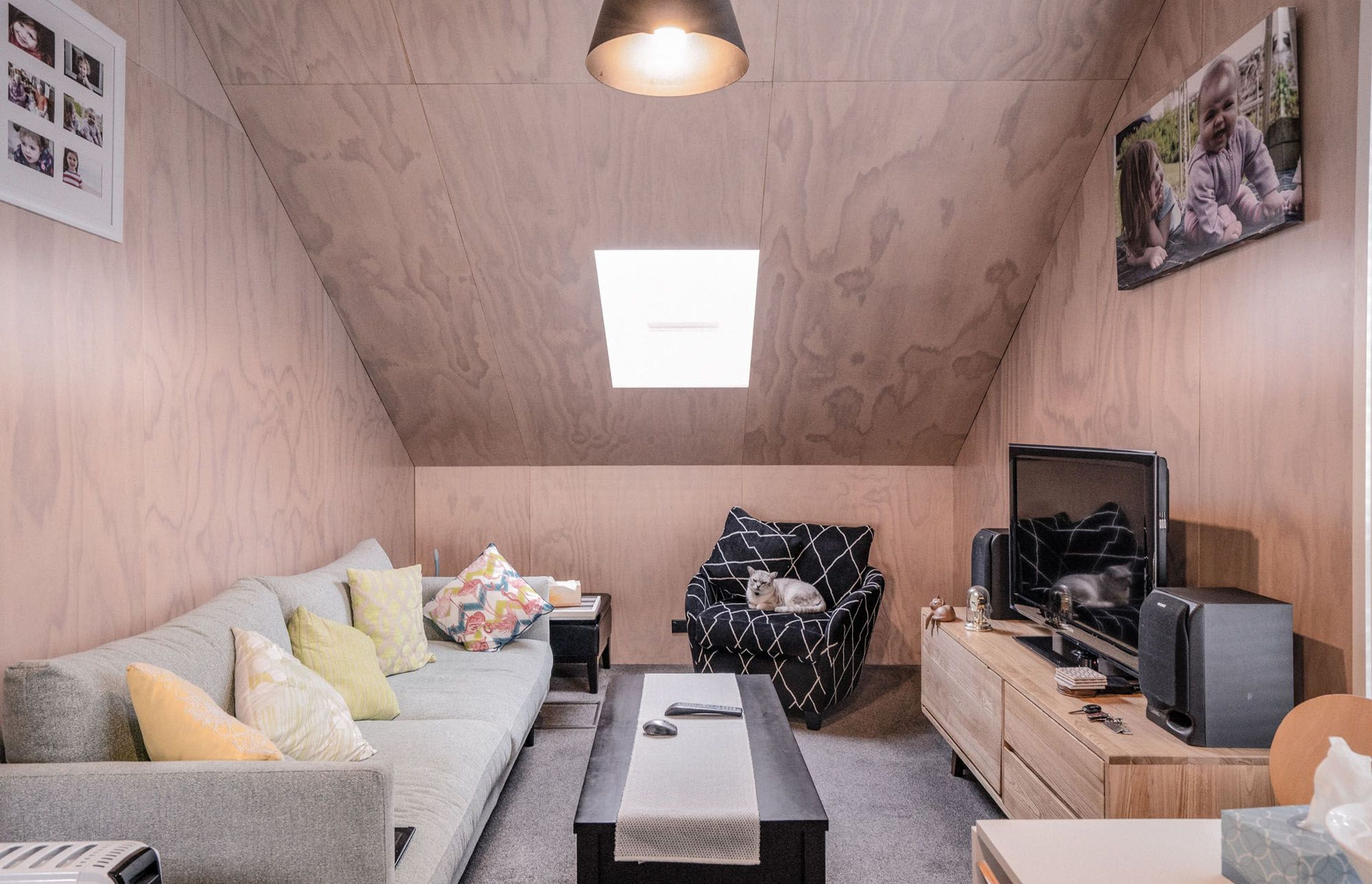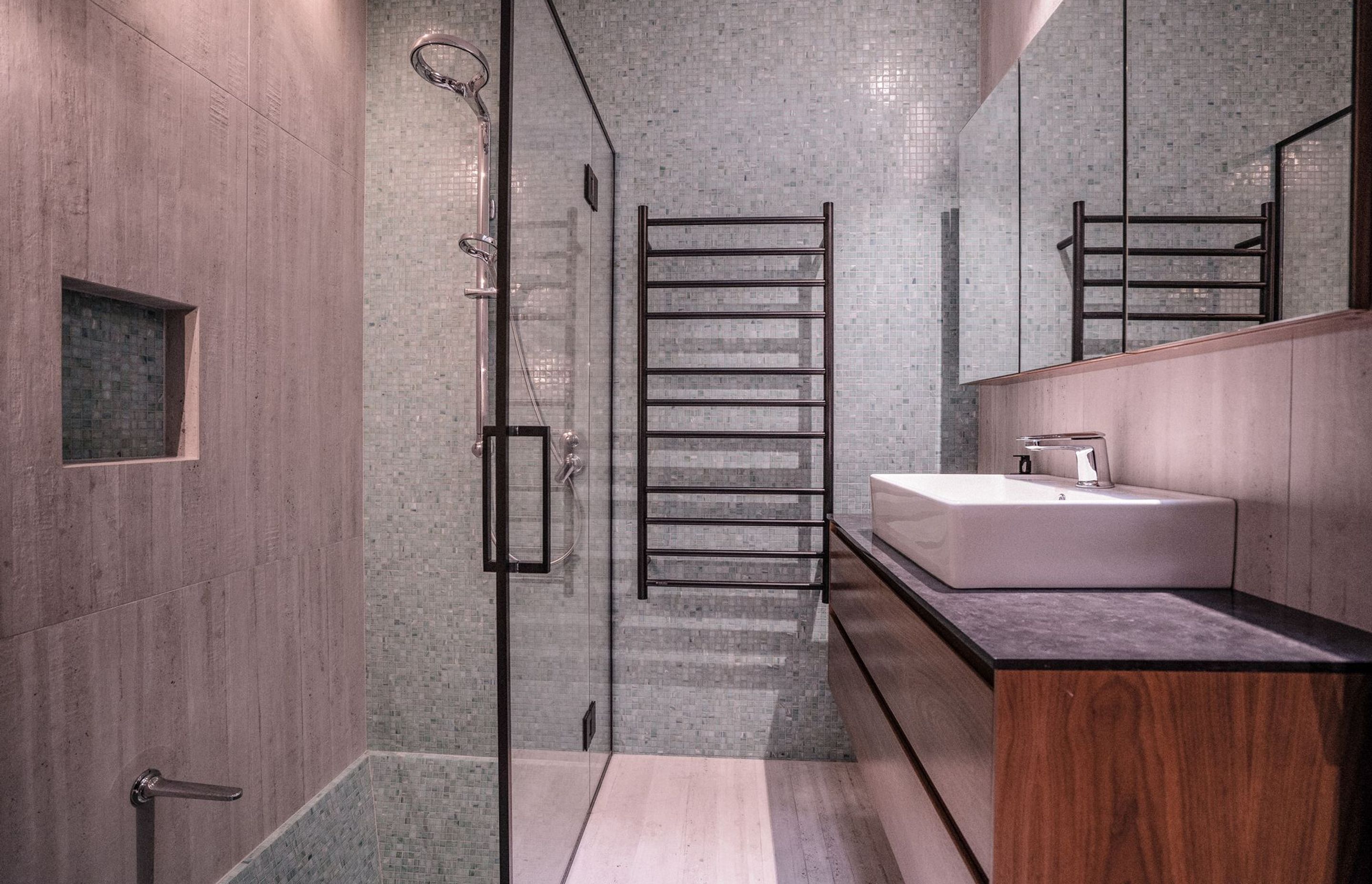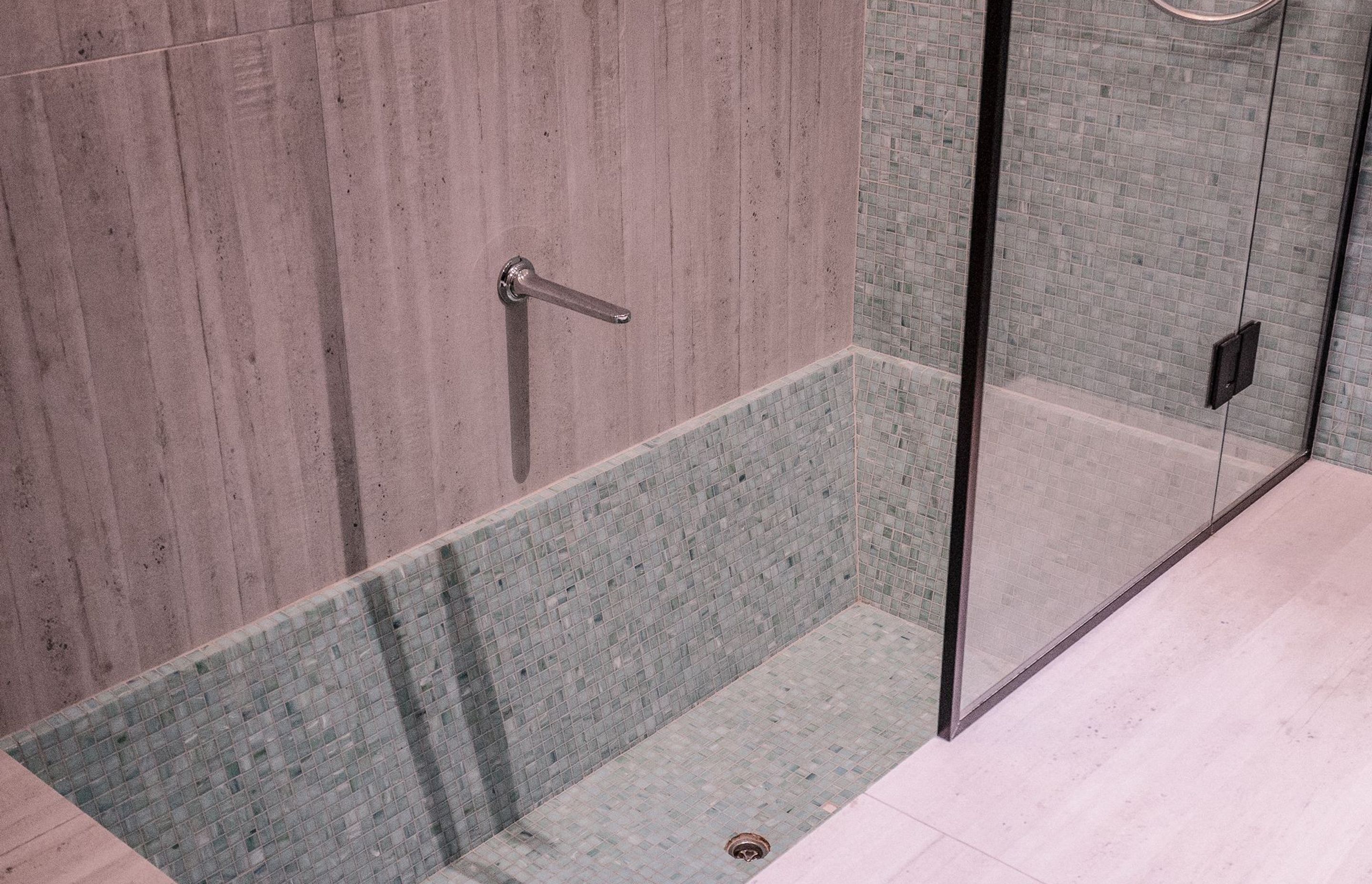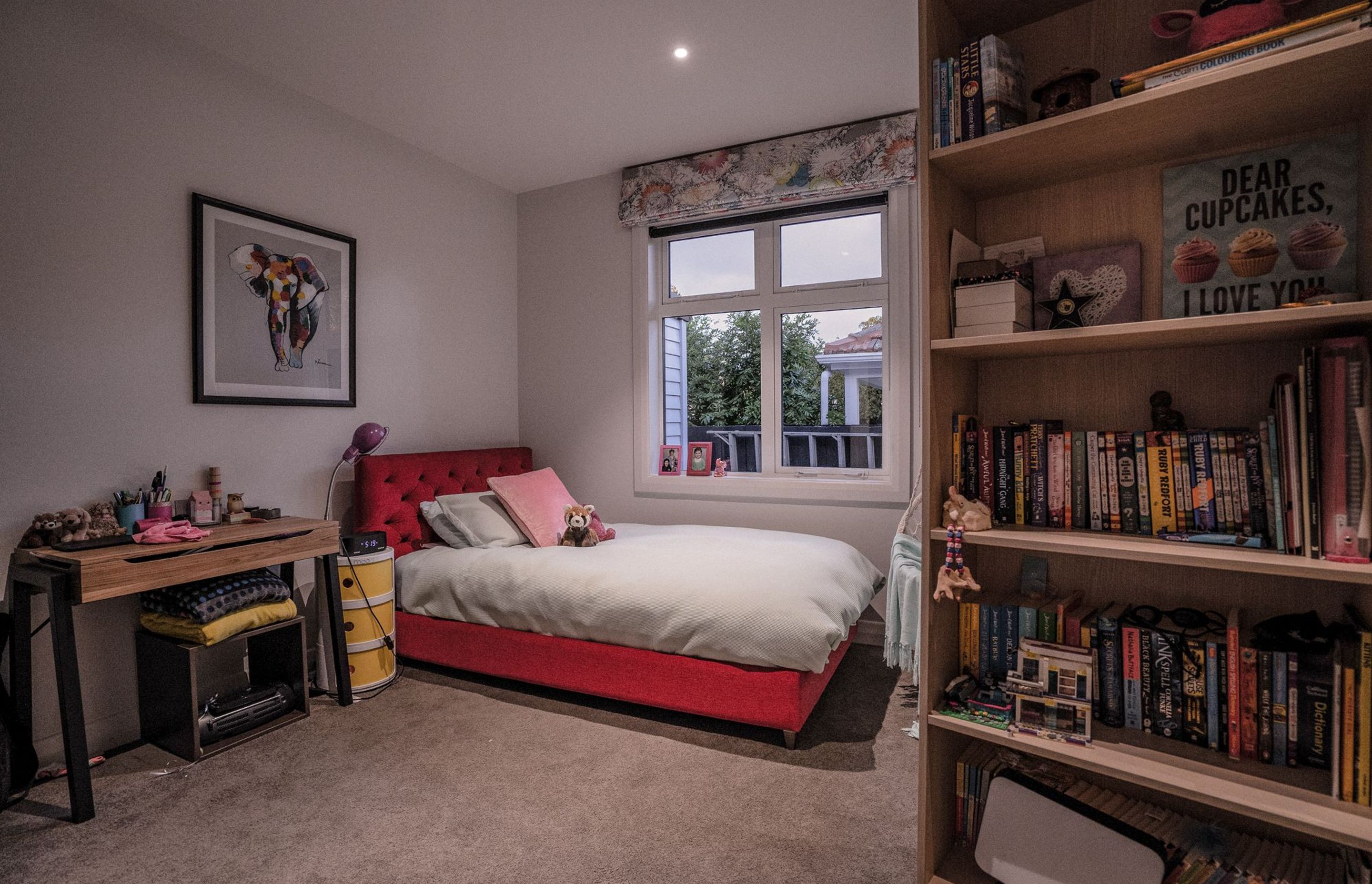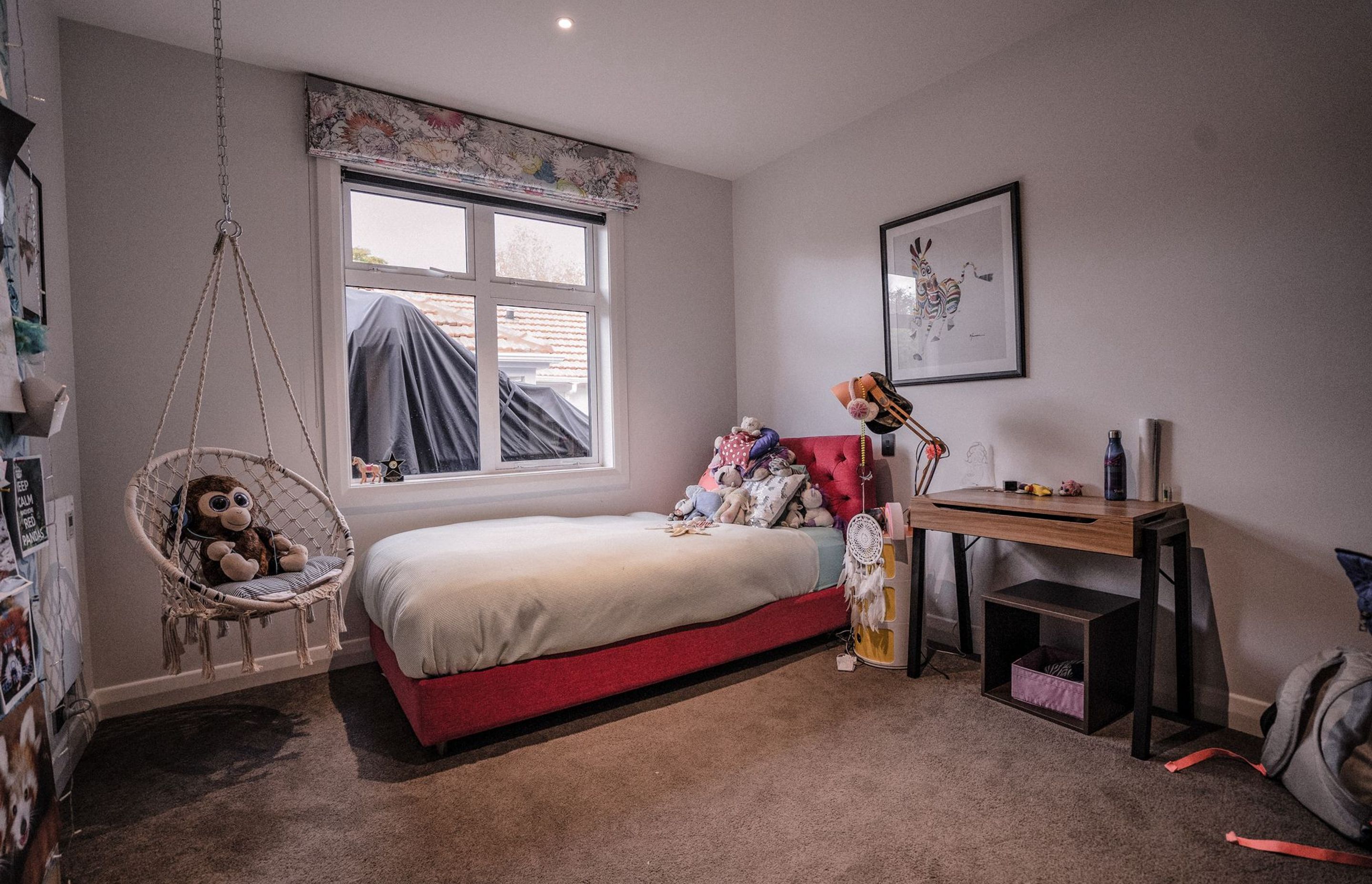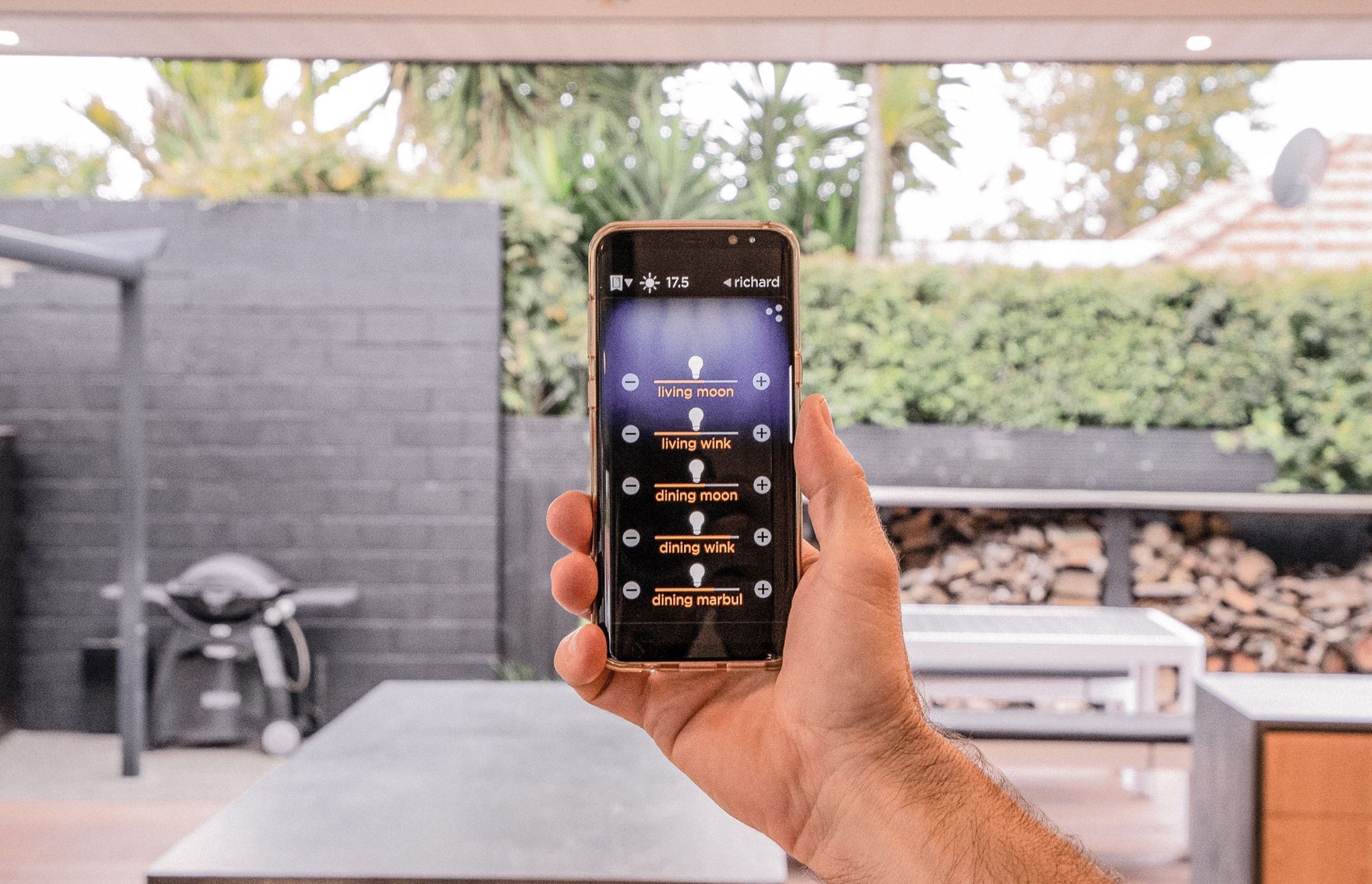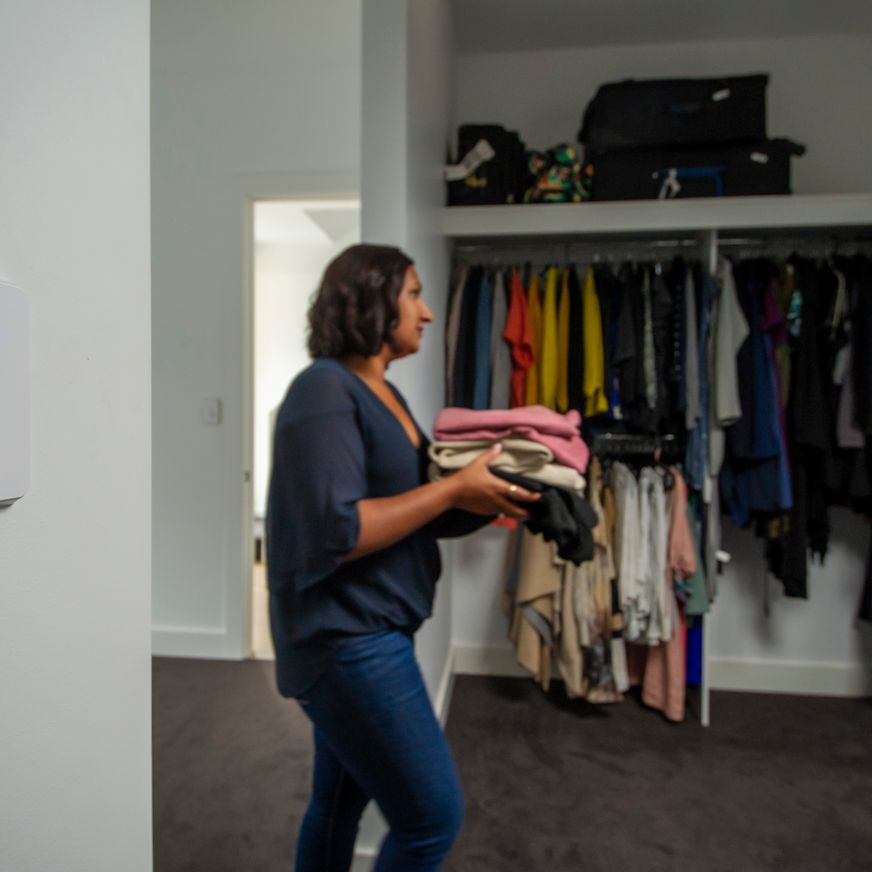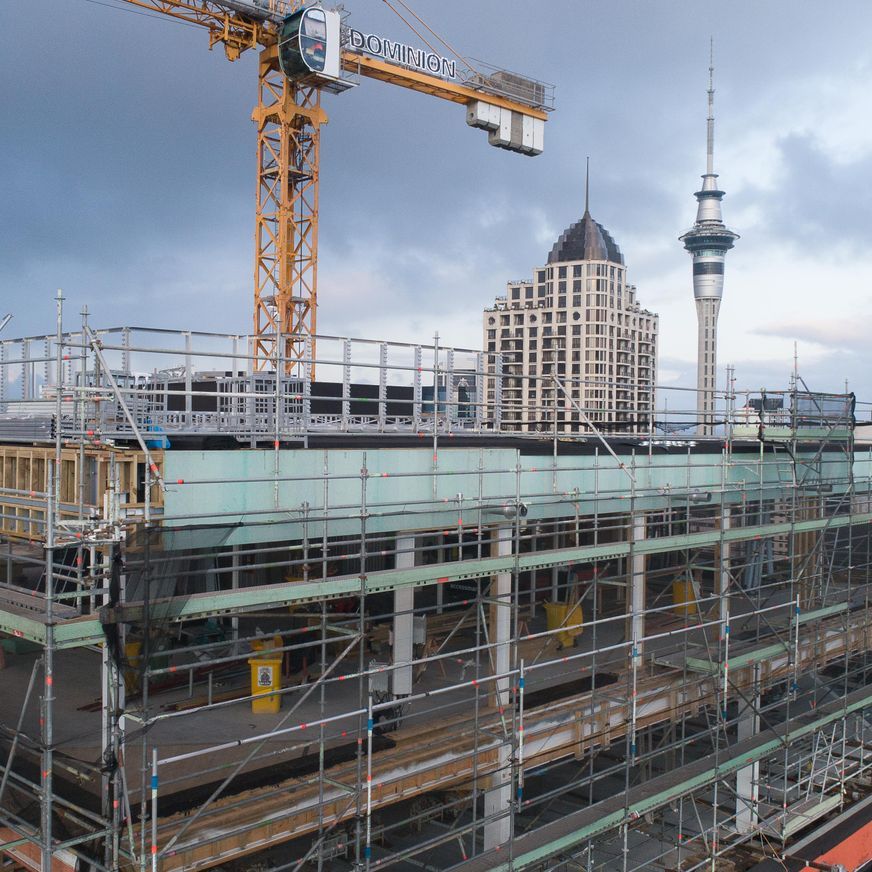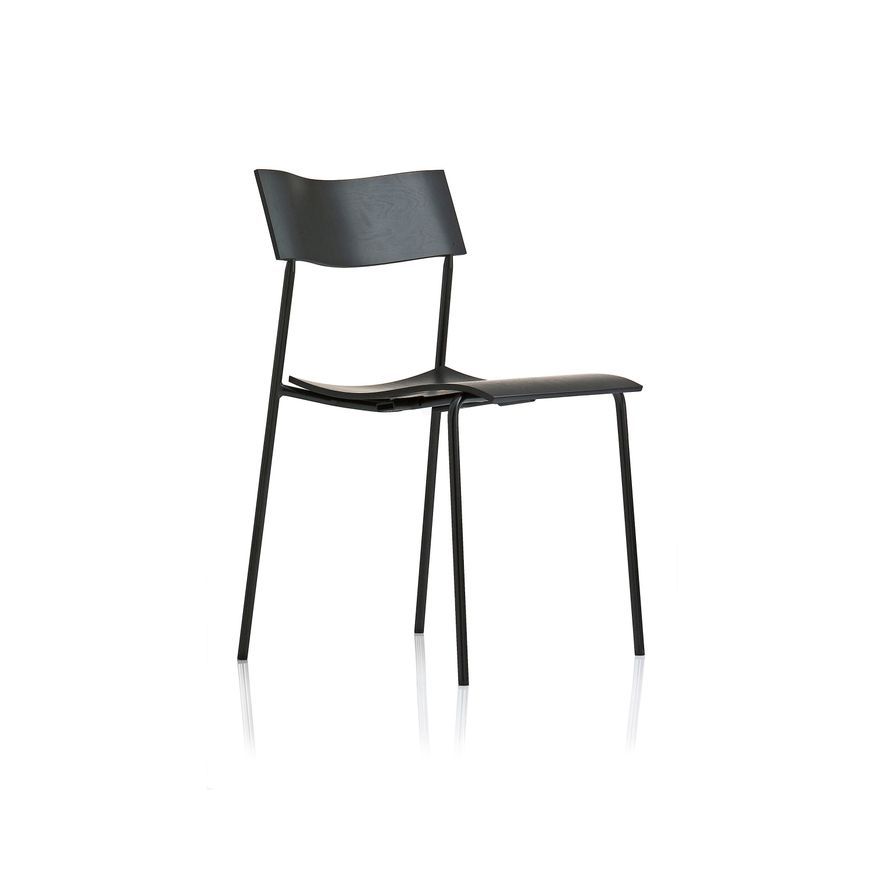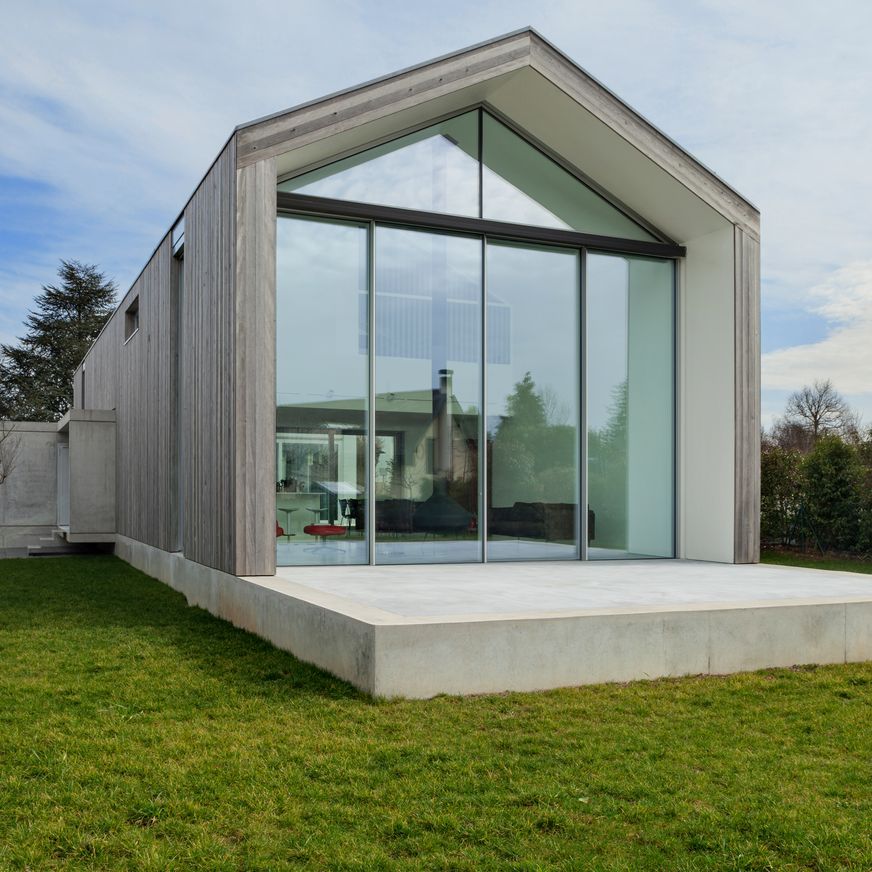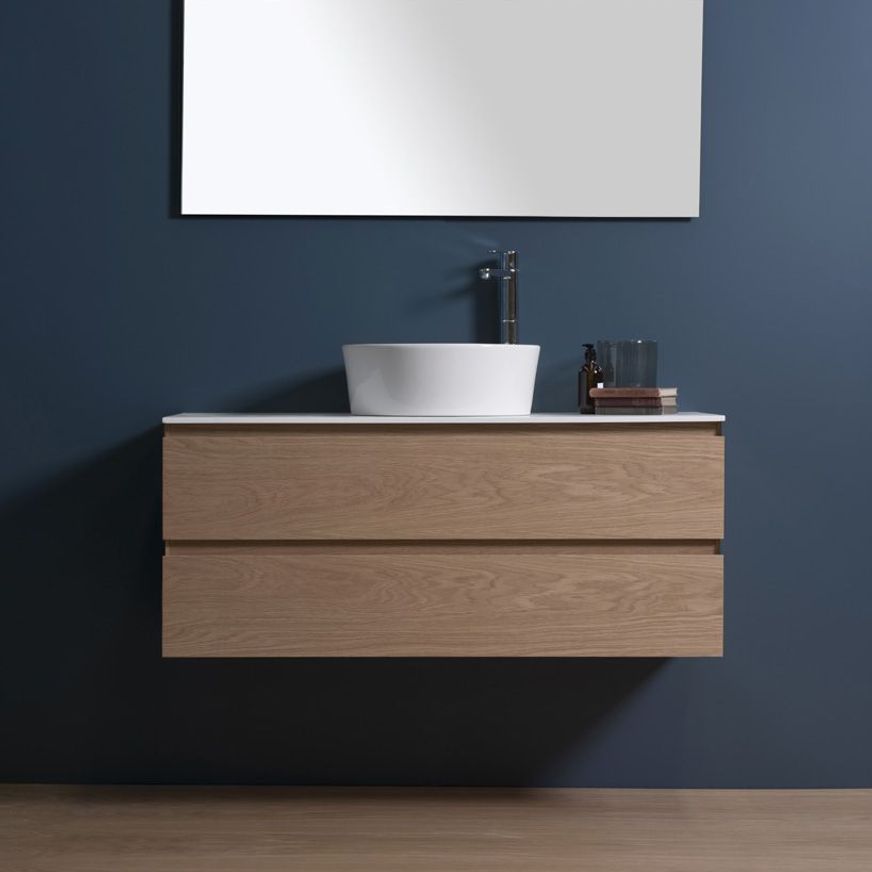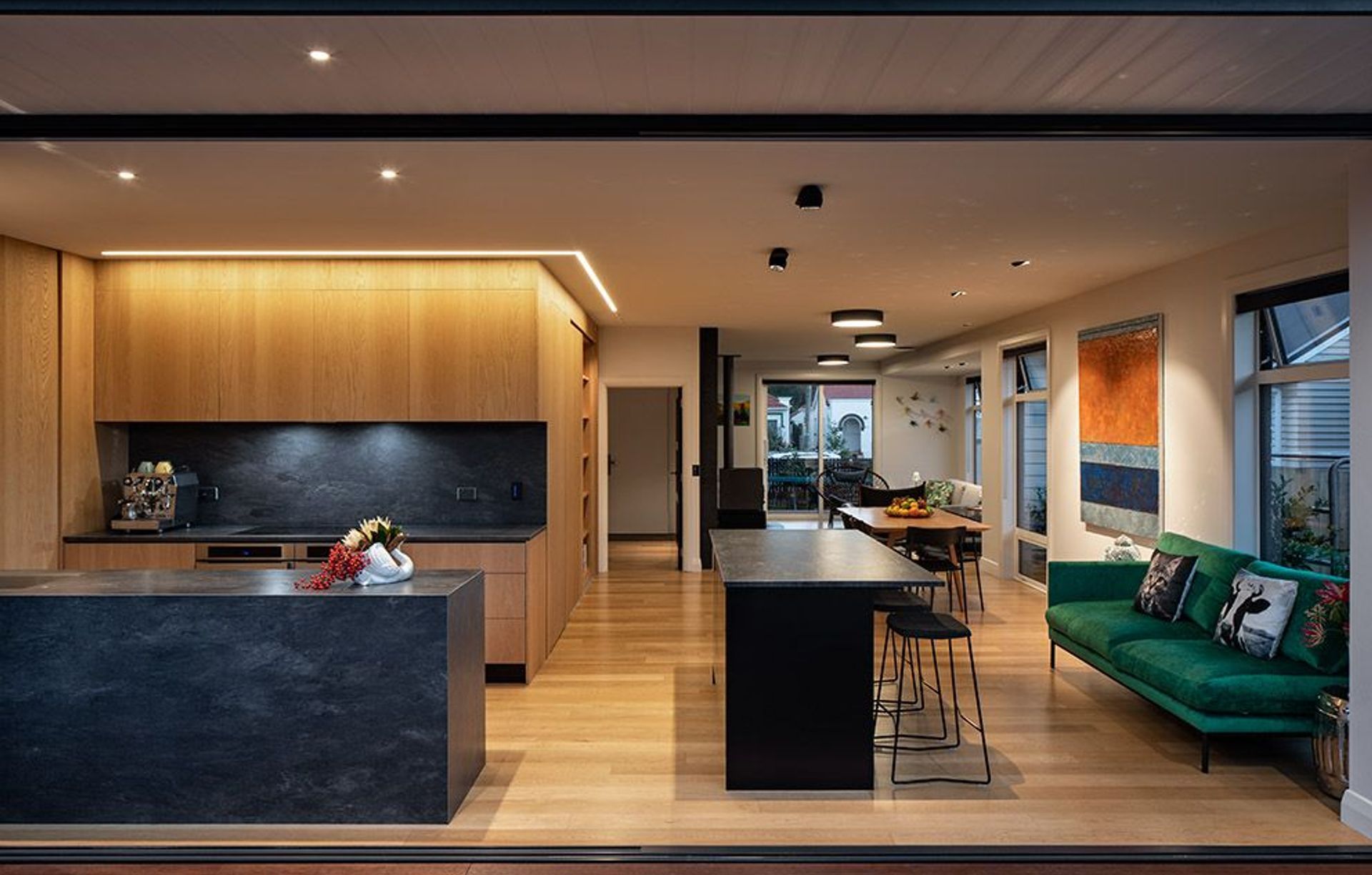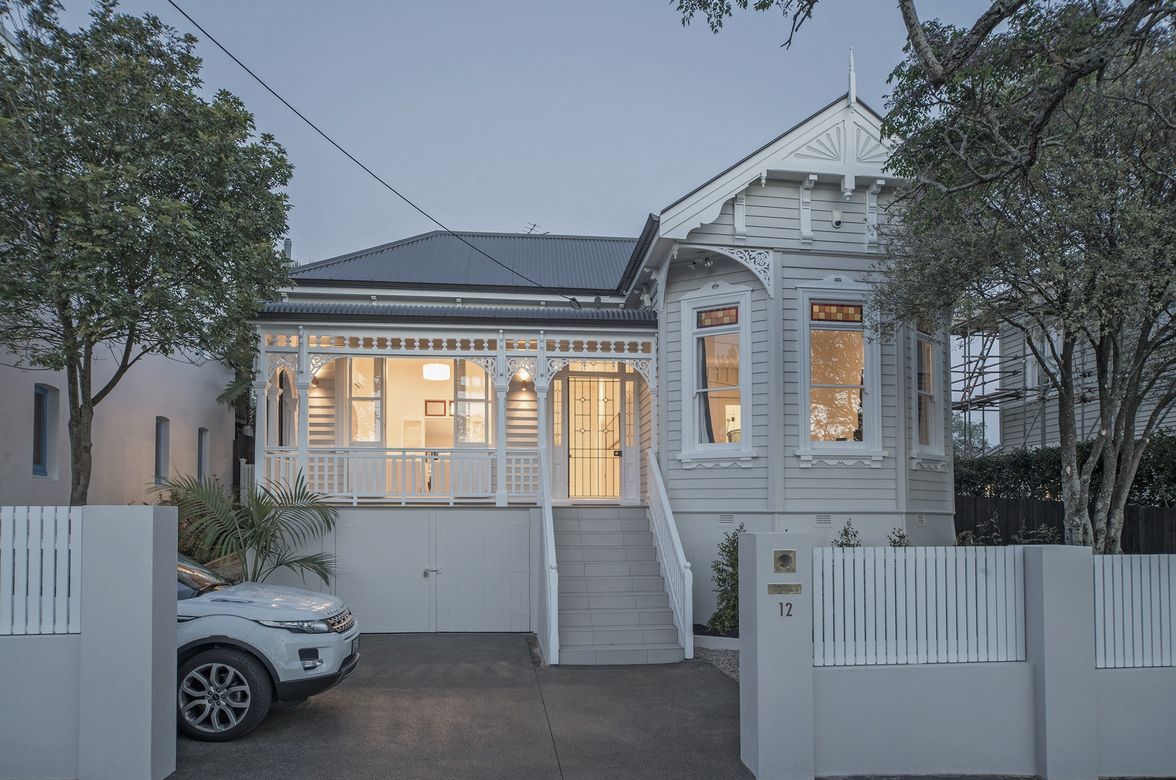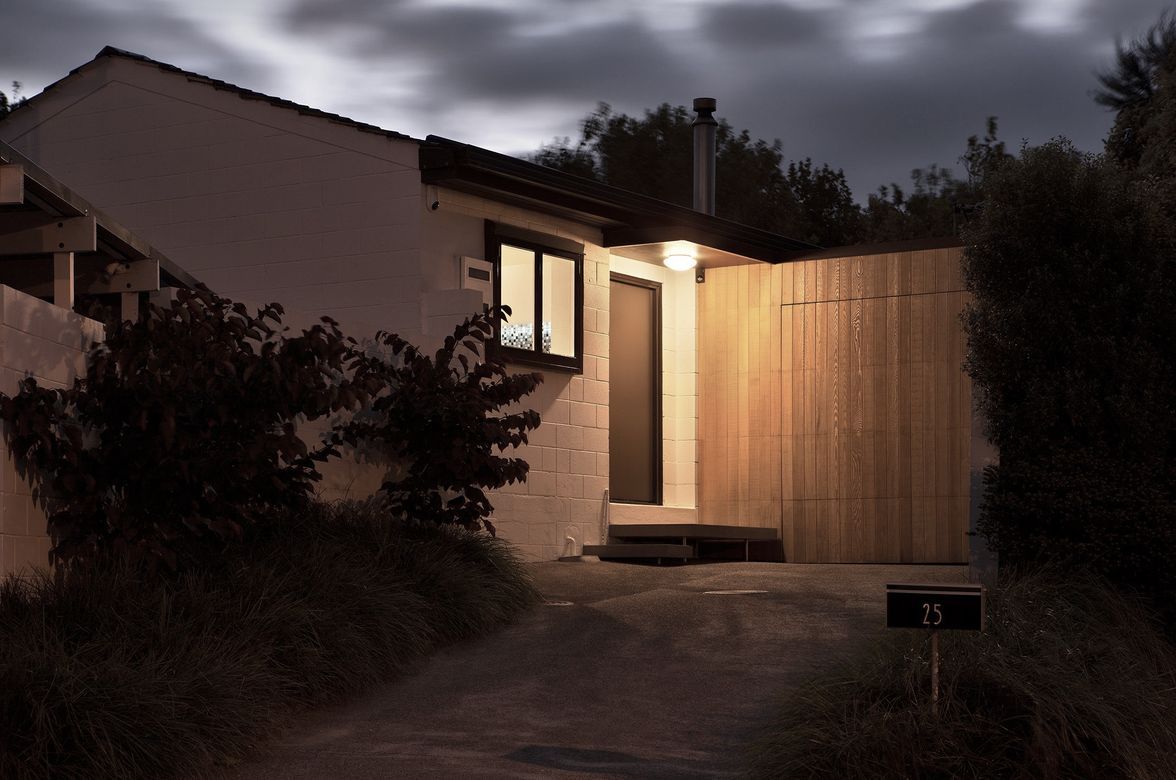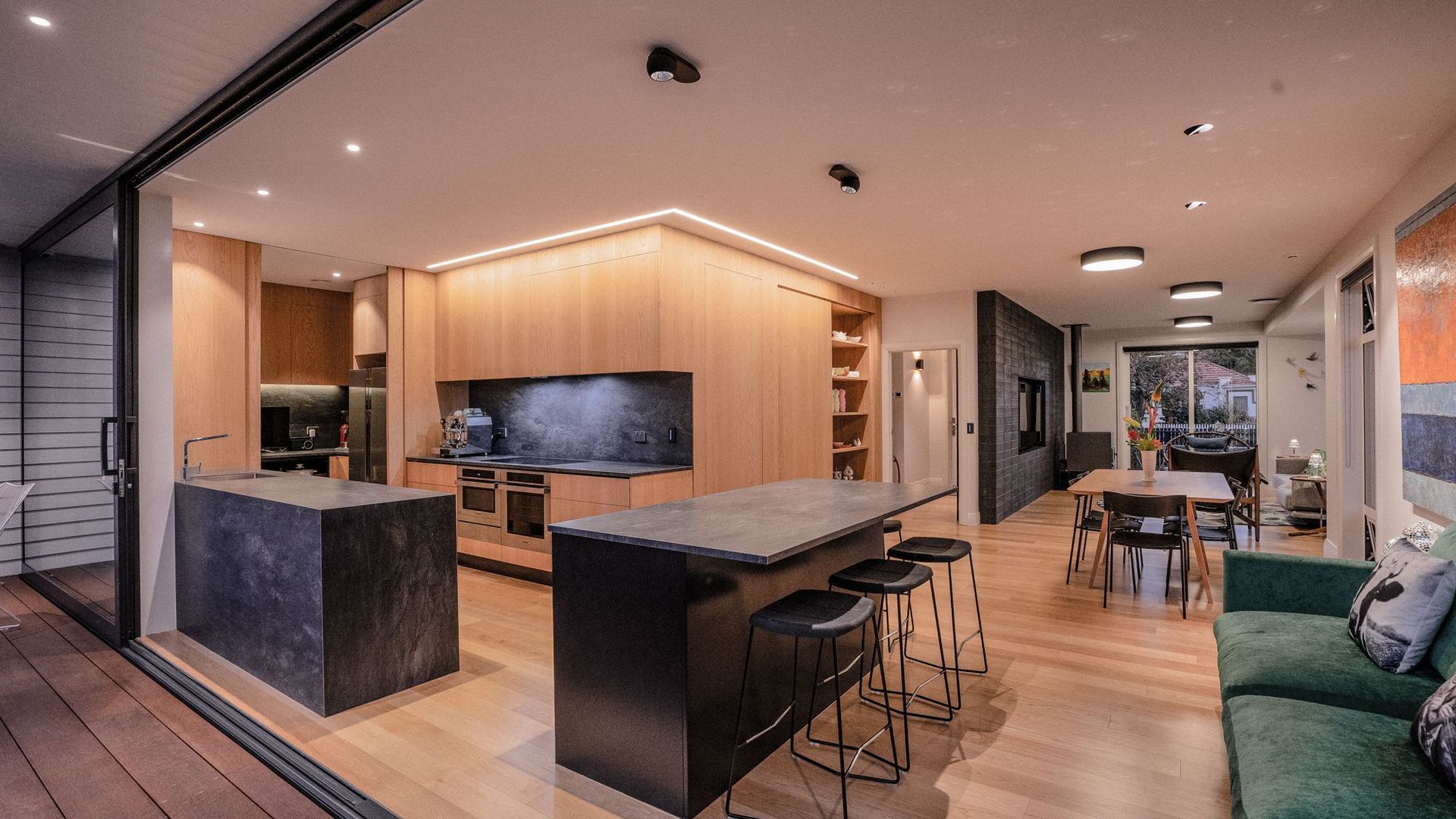
Furze House
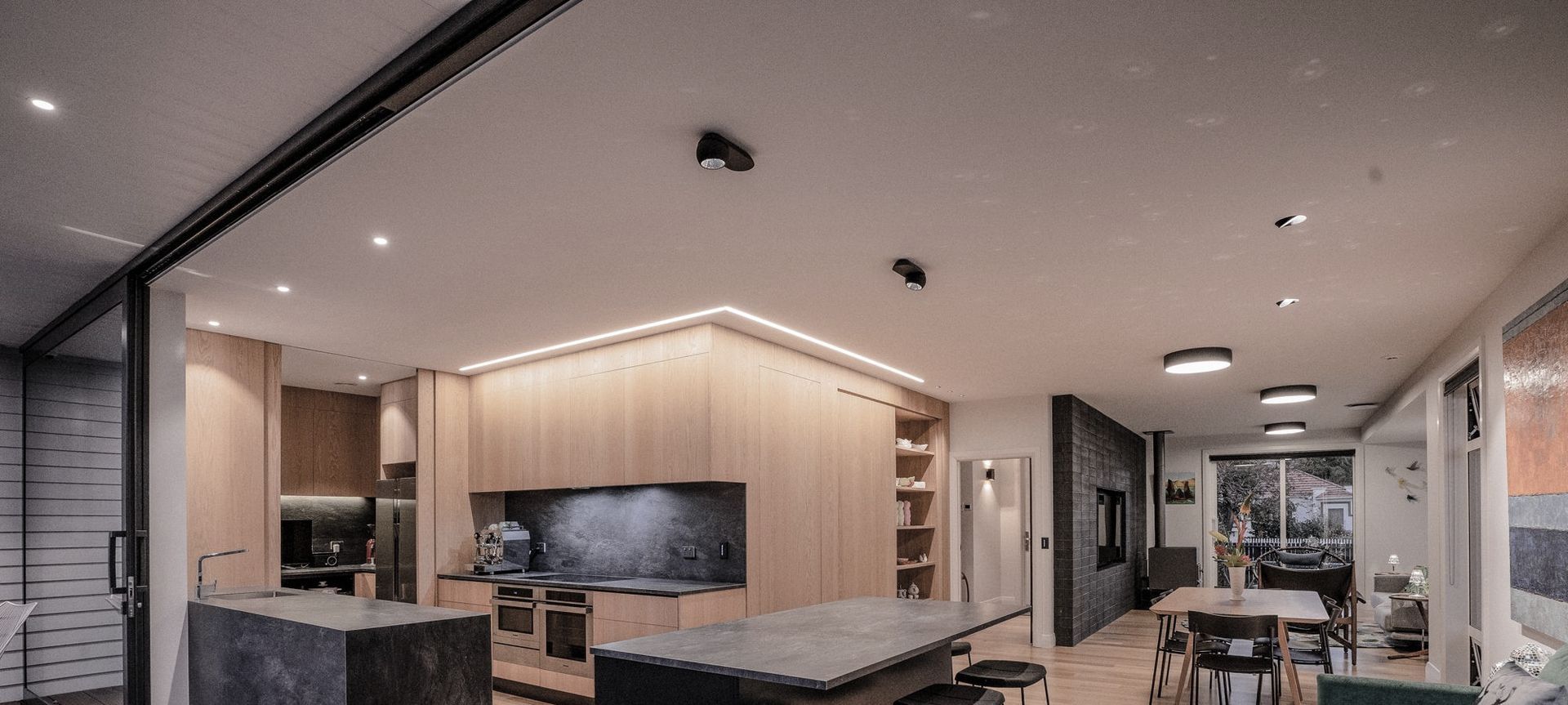
This Sandringham home was redesigned to both omit and incorporate elements of the original ex-state house that once stood in its place. Crafted with budget in mind, design choices and materiality were central to creating a home that offers more than its simplicity suggests.
Designed by architectural designer Richard Furze for his own family – him and his wife and two children – the concept was based around creating a modest sized home of open, sociable spaces, as well as a separate abode for his mother-in-law.
The original brick-and-tile house that stood on this site had been renovated in the 1970s and had none of its original state house character, so everything but the foundations and floors were demolished so that the existing flood plain levels could be kept.
What now sits on this suburban site in Auckland’s Sandringham is a home that harks back to what once was, a modest yet evocative home refined in its simplicity. Conceptualised as affordable architecture, this home delivers more with less.
Material choice was important, with the majority of the exterior materiality based upon materials that were readily available and commonly used in the 1940s when the original dwelling was built. “What I wanted to do was use the principles of a state house but use the modern versions of the older materials and to modernise the flow to ensure ease of use and durability,” Richard says.
What transpired was a simple palette of block, concrete brick, palliside PVC weatherboards and a Colorsteel roof. Black, modern bricks juxtapose white weatherboards; the strong lines and simple form broken up with the timber decking.
The same pared back colours flow through into the interiors. “All the shapes are very simple and I really limited the amount of colours used. This is beauty in simplicity.”
The concept of simplicity was central to creating affordable architecture – this home came at a modest cost of $3000/m2 – and everything from the materials through to the structure itself is based around it.
Where possible, the materials used were available prefinished to reduce installation and labour costs; prefabricated trusses and framing were used to allow for a quick on site build and limited wastage.
The result is a wholly new dwelling comprising five bedrooms and three bathrooms (one bedroom and bathroom makes up the self-contained loft above a new double garage). But perhaps the standout feature of this contemporary home is the entertaining area that begins with the kitchen where a sink-less island acts as the main communal point. The open kitchen, highlighted with natural timber, a black island and porcelain benchtop, flows out to its exterior counterpart.
Here, what was once a single garage is now the heart of the couple’s living space. Two walls and the roof were removed. The walls that remain form the basis of an intimate entertaining space, capped at one end by an outdoor fire and pizza oven, which sits within an original block wall – now painted black ready for it to be covered with a creeper over time. Overhead, a retractable roof allows for versatile use of the area.
It is in the continued, crafted use of the same materials where this house comes into its own, finding its sense of character in the simple details.
No project details available for this project.
Request more information from this professional.

Products used in Furze House
Professionals used in Furze House
More projects by Furze Architecture & Design
About the
Professional
As the son of a well-known Taranaki building family, I grew up on a building site and proved to be cheap labour while at school. After spending six years in the design industry in New Plymouth, I moved north to Auckland in 1996 and set up my own business.
I would describe my style as predominantly contemporary, with an emphasis on simplicity of design. I work closely with my clients to ensure that each project is individually designed to meet their unique needs and requirements, while reflecting their personality throughout. When approaching renovations, I like to consider the existing character of the home and often work to restore at the same time as renovate as part of the project, preserving the integrity of the original home.
- ArchiPro Member since2016
- Follow
- Locations
- More information
Why ArchiPro?
No more endless searching -
Everything you need, all in one place.Real projects, real experts -
Work with vetted architects, designers, and suppliers.Designed for New Zealand -
Projects, products, and professionals that meet local standards.From inspiration to reality -
Find your style and connect with the experts behind it.Start your Project
Start you project with a free account to unlock features designed to help you simplify your building project.
Learn MoreBecome a Pro
Showcase your business on ArchiPro and join industry leading brands showcasing their products and expertise.
Learn More